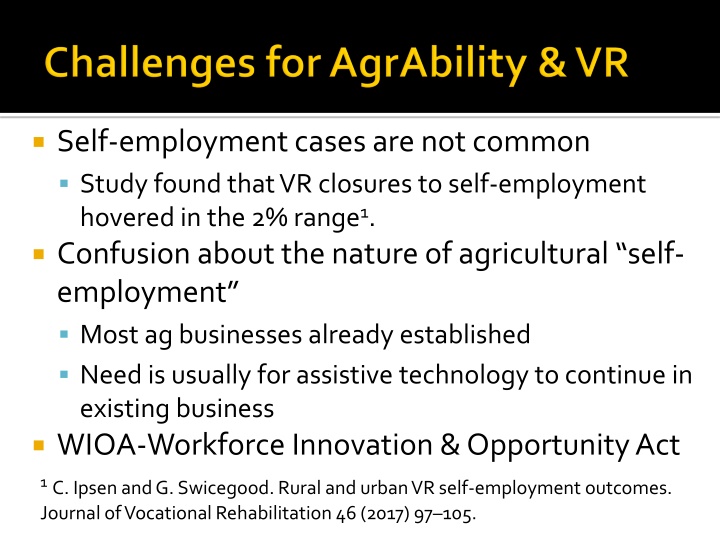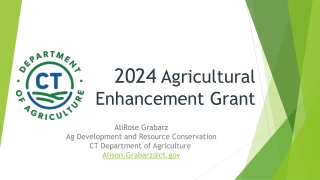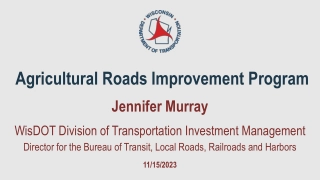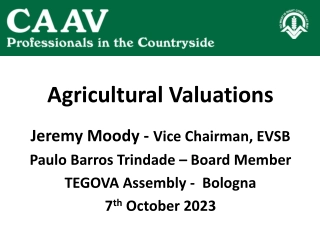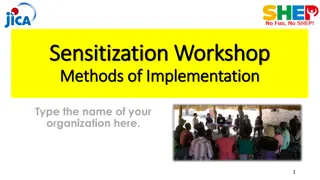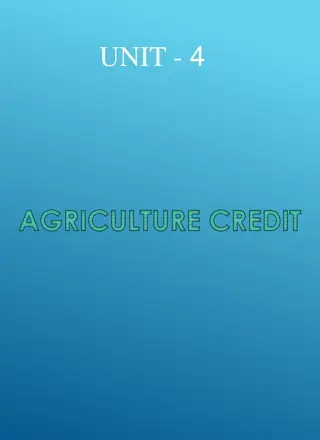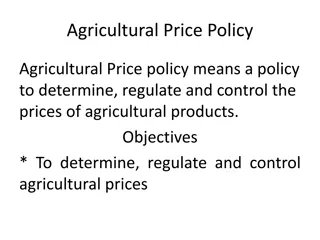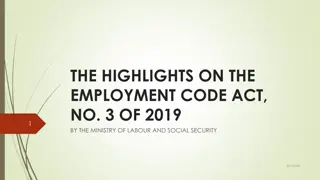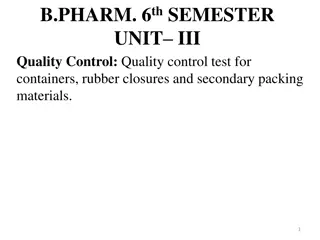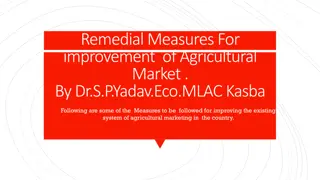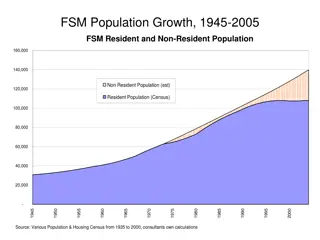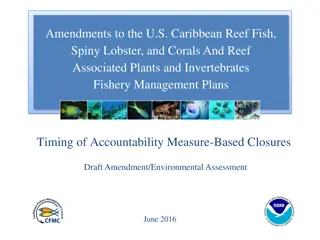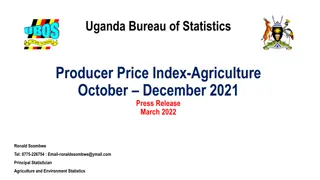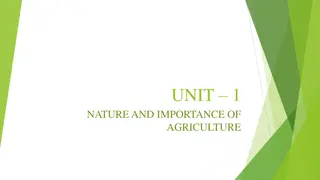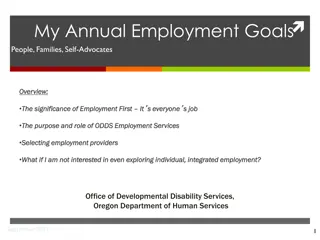Self-Employment Trends in VR Closures and Agricultural Businesses
A study reveals that self-employment cases are uncommon, with VR closures around 2%. There is a need for assistive technology to support existing agribusinesses. This highlights the confusion surrounding agricultural self-employment and the relevance of the WIOA in fostering opportunities.
Download Presentation

Please find below an Image/Link to download the presentation.
The content on the website is provided AS IS for your information and personal use only. It may not be sold, licensed, or shared on other websites without obtaining consent from the author.If you encounter any issues during the download, it is possible that the publisher has removed the file from their server.
You are allowed to download the files provided on this website for personal or commercial use, subject to the condition that they are used lawfully. All files are the property of their respective owners.
The content on the website is provided AS IS for your information and personal use only. It may not be sold, licensed, or shared on other websites without obtaining consent from the author.
E N D
Presentation Transcript
Self-employment cases are not common Study found that VR closures to self-employment hovered in the 2% range1. Confusion about the nature of agricultural self- employment Most ag businesses already established Need is usually for assistive technology to continue in existing business WIOA-Workforce Innovation & Opportunity Act 1C. Ipsen and G. Swicegood. Rural and urban VR self-employment outcomes. Journal of Vocational Rehabilitation 46 (2017) 97 105.
Successful Case Closure: Consumer is successfully placed in competitive and integrated employment, has achieved stabilization, and has retained employment for at least 90 days. Competitive and integrated employment Showing minimum wage Some AgrAbility projects reported denial of services if client couldn t show history of minimum wage. Looking at IRS Schedule F and dividing income by hours
Understand the issues related to state & regional AgrAbility projects (SRAPs), VR agencies, and the Workforce Innovation and Opportunity Act (WIOA) WIOA = need to show minimum wage Understand the regulations related to SRAPs, VR, and WIOA Understand how all these issues mesh
Wide variety of agricultural enterprise types and many different patterns of expenses and cash flows. Dairy farmers typically receive regular (e.g., biweekly) payments from milk processors/cooperatives Grain farmers only receive payment for their labor and other expenses when their crops are sold which may be in a different year than when they were produced Livestock producers and fruit/vegetable producers have still different expense/income patterns
Agricultural accounting is complex Financial reporting typically involves calculations of factors like depreciation, government payments, cash rent of land, and a large variety of expenses Since most agricultural operators live on their farms or ranches, it may be difficult to distinguish between business and personal expenses
Efforts to minimize tax liabilities are widespread among agricultural producers, and showing negative income is a common way of doing so. Tax evasion is illegal, tax avoidance is not Purchases of equipment or livestock at end of year to minimize taxes Prepay expenses for the following year for inputs like fertilizer, feed, and seed to minimize taxes
Take this hypothetical example from Successful Farming magazine: Consider a young farmer who tells his CPA, It s December 1 and it looks like I m going to make $200,000 in profit. What can I do? The response will likely be, Buy a $200,000 tractor before December 31. https://www.agriculture.com/farm-management/finances-accounting/six-tax-tips-for- farmers-to-avoid
Even though cash flow may appear minimal, agricultural operations typically maintain large amounts of capital in land and equipment that in some cases appreciate in value. Enables some operations to remain viable when cash flow is limited Income might be invested back into the enterprise instead of generating cash, which may make wages appear lower than they actually are
Differences between viability (financial health) and apparent profitability How is the disability affecting current financial outcomes? How would the provision of services, including assistive technology, affect financial outcomes? Simply looking at Schedule F can t provide answers to these questions.
TECHNICAL ASSISTANCE CIRCULAR - RSA-TAC-17-04. Sources of information for such documentation include: 1.Unemployment insurance system (UI) wage data match 2. Follow-up survey from program participants 3. Pay check stubs, tax records, W2 form 4. Wage record match 5. Quarterly tax payment forms, such as a IRS form 941 6. Document from employer on company letterhead attesting to an individual s employment status and earnings 7. Self-employment worksheets signed and attested to by program participants 8. Detailed case notes verified by employer and signed by the counselor
TECHNICAL ASSISTANCE CIRCULAR - RSA-TAC-17-04. Sources of information for such documentation include: 7. Self-employment worksheets signed and attested to by program participants Earnings (or net profit) can be calculated by subtracting total expenses from gross receipts. Not all self-employed individuals receive a salary, but the funds that represent income over expenses that are available to be invested back into the business are considered earnings.
Nebraska VR Consultant with ag lending & farming experience Examines tax returns (3 years) and financial statement listing all debts and assets Considers the following categories: size of business, financial structure, working capital, assets, leverage (debt to asset ratio), and tax returns Makes recommendations to VR agency, and in some cases the farmer or rancher
Missouri VR Maintains a farm team composed of counselors within the agency who have farming backgrounds and/or their own agricultural operations. Does not require the agricultural producer to provide a business plan. Members of the farm team normally visit the operation to help determine viability. On-site visits also help VR counselors determine if the operation is a true income- producing venture. The farm team collaborates with external groups, such as AgrAbility and Farm Bureau, to provide training to VR counselors in their agency, including on-farm events where counselors have the opportunity for hands-on experiences with farm equipment and tasks.
